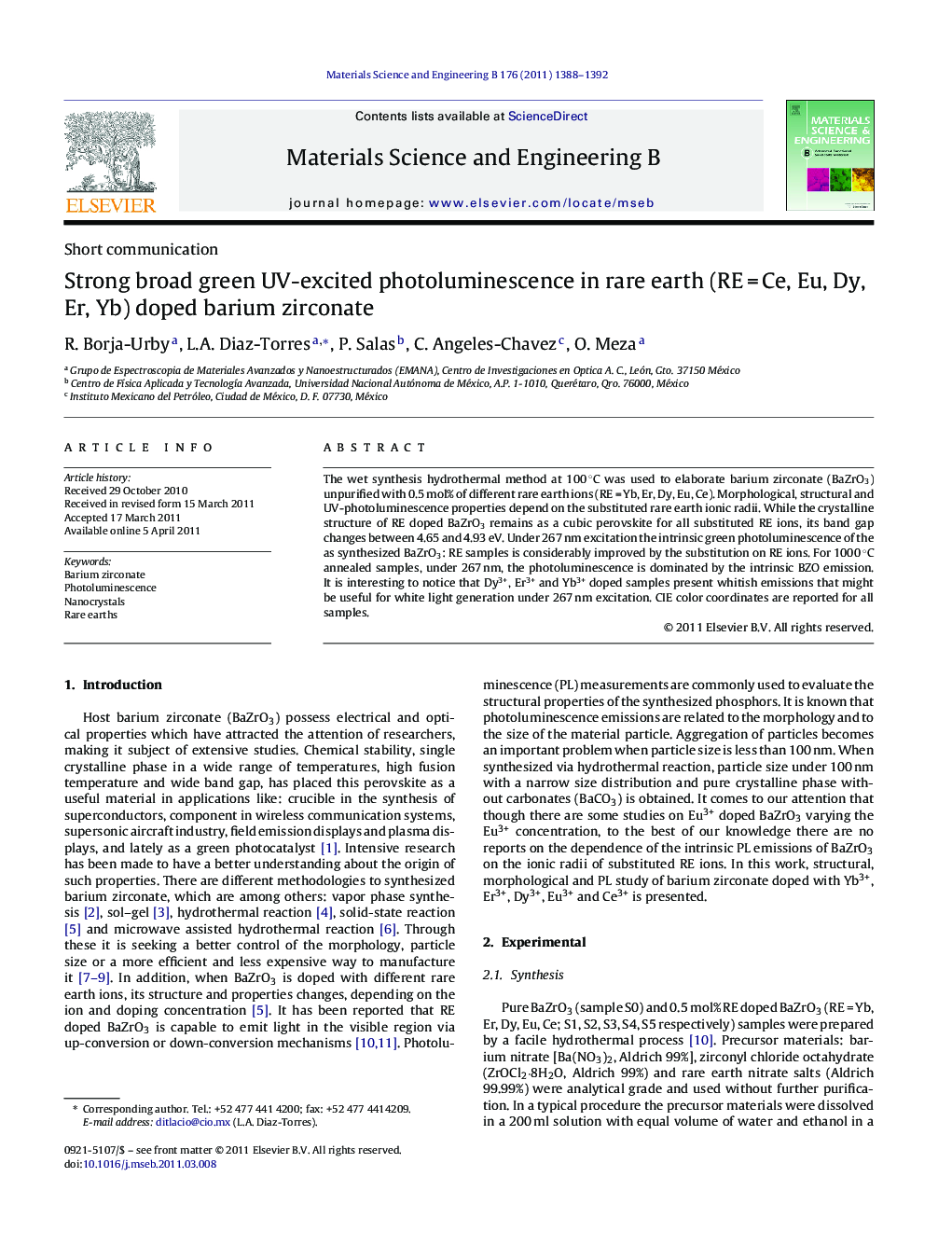| Article ID | Journal | Published Year | Pages | File Type |
|---|---|---|---|---|
| 1529650 | Materials Science and Engineering: B | 2011 | 5 Pages |
The wet synthesis hydrothermal method at 100 °C was used to elaborate barium zirconate (BaZrO3) unpurified with 0.5 mol% of different rare earth ions (RE = Yb, Er, Dy, Eu, Ce). Morphological, structural and UV-photoluminescence properties depend on the substituted rare earth ionic radii. While the crystalline structure of RE doped BaZrO3 remains as a cubic perovskite for all substituted RE ions, its band gap changes between 4.65 and 4.93 eV. Under 267 nm excitation the intrinsic green photoluminescence of the as synthesized BaZrO3: RE samples is considerably improved by the substitution on RE ions. For 1000 °C annealed samples, under 267 nm, the photoluminescence is dominated by the intrinsic BZO emission. It is interesting to notice that Dy3+, Er3+ and Yb3+ doped samples present whitish emissions that might be useful for white light generation under 267 nm excitation. CIE color coordinates are reported for all samples.
► Trivalent rare earth (RE) substitution on Zr4+ sites in BaZrO3 lead to band gap narrowing. ► RE substitution lead to enhanced blue-green intrinsic emission of nanocrystalline BaZrO3 ► Blue-green hue of BaZrO3:RE depends on RE dopant and excitation UV wavelength ► BaZrO3: Dy3+ PL chromatic coordinates correspond to pure white color coordinates of CIE 1931 model
